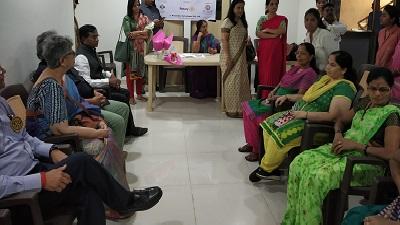Gynaecologist’s Guide – Part 2: Counseling for a cervical exam
In the last article in this series, we saw why women miss out on a regular gynac check up despite having access to a clinic and how doctors can proactively identify women who are eligible for a cervical health exam.
In this short article, we will see how a woman visiting a gynac OPD or a primary health center in a public healthcare setup can be counseled to undergo a simple cervical exam.
In the absence of any symptoms commonly correlated to a reproductive health issue, a bimanual (with both hands) pelvic or per vaginal per speculum (p/v p/s) examination can be deemed unnecessary by a woman. Asking seemingly perfectly healthy women to visit a gynac just for a preventive checkup requires building awareness in the population and may not be something that an individual doctor can achieve. However, asking women who are already at a point-of-care clinic or health center with any other complaint – even if it is as unrelated as a headache – to undergo an annual cervical health checkup is definitely doable, although it does require a well-prepared approach to counseling.
Here are a few tips to help you as a doctor to get the pre-exam communications right. Include the following points in counseling when a per speculum exam is being suggested:
- Briefly state how annual cervical health examinations for married women in the age group of 25 to 65 yrs can help identify asymptomatic infections which can cause long term damage if left unattended for many years. It may help not to talk about cancer at this stage if the woman is from a lower economic group or uneducated, as she may want to avoid finding out about problems due to economic implications.
- Assure that the exam will not cost anything extra or cost a very small amount, as per the policy at your practice.
- Briefly state that you will be looking at the mouth of the uterus through a small instrument. Show pictures of a healthy cervix while you explain.
- Assure that a female nurse will be performing the exam or be present during the exam.
- State that the exam will take 5-10 minutes and will provide a report immediately.
- Emphasize that it involves only looking at the mouth of the uterus therefore is not painful at all.
- Assure that she can ask to stop at any point and that she will be completely in control at all times.
- Take a clear verbal consent.
Have questions? Don’t worry; we can train you and your team for these communications leading to a successful cervical screening program in your practice.
Next in series: Equipping the OPD for a cervical health examination


3 replies on “Gynaecologist’s Guide – Part 2: Counseling to undergo a cervical health exam”
nice blog
nice info……..